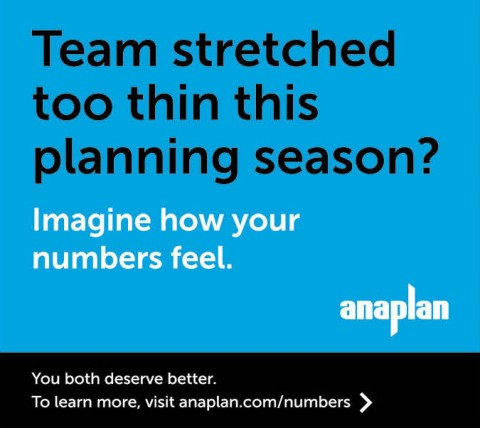Workforce planning has emerged as a critical differentiator for companies operating in today’s volatile economy. In the thick of this uncertain economy, one thing remains constant: talented employees are tough to retain. In fact, executives cite this as a top challenge and priority. According to a 2015 Harvard Business School Analytic Services report, 87 per cent of executives struggle to find talent and retain top employees, and have shortages in select areas of the business.
With disparate data culled from financial systems, human resources systems and third-party sources, HR leaders struggle to bring together the right information to make the right planning decisions about individuals, teams and departments. On top of this is the challenge of keeping that data fresh.
But even the HR systems reside in silos. At the 2015 HR Technology Conference in Las Vegas, keynote speaker Marcus Buckingham, author of Standout 2.0, said: “Today we have disaggregated systems: my performance management system is here, employee engagement system here, 360 system here, Meyer Briggs or Strengths Finder results over here, learning management system over here. And the team leader is supposed to integrate it all.” Addressing software vendors in the audience, Mr Buckingham asked for solutions that “just put it all together” so leaders can do a better job of creating the best team possible.
Workforce planning informs decisions in each area of HR from recruiting to developing, deploying and retaining people. Yet these aspects are often considered separately. Done correctly, workforce planning provides the glue for your HR processes, and manages the levers of supply and demand for each of the HR functional components, all while holistically fine-tuning the balance between cost control and company growth.
According to a 2014 Aberdeen Research report, 54 per cent of organisations surveyed still had manual or spreadsheet-based workforce planning capabilities. The side effect is companies waste considerable time linking spreadsheets, consolidating numbers, troubleshooting errors and reloading data, resulting in the loss of business agility, missed opportunities in hiring top talent and hindering company growth.
But the solution is more than just replacing spreadsheets, which are only a symptom of the real problem. The reality is most workforce planning systems are not built to either keep the plan easily updated or model for the future.
These workforce planning challenges are not new. What’s changed is the speed of business today. Address the need for accompanied speed in workforce planning that keeps up with business changes and you will have created real competitive separation from your industry peers.
It’s great to have the software and tools in place to understand, for example, which roles drive profitability, the optimal skills for a department, and how to manage current talent and the pipeline of incoming recruits to fill those roles. But connect how you do all these things and you will create a huge competitive advantage for your organisation. Why? Because only then can a company truly optimise its talent acquisition, retention, development and deployment efforts.
This isn’t a vision for tomorrow – it’s here today. Anaplan, for example, provides a cloud-based enterprise planning platform to enable collaboration across regions, departments and hierarchy levels, fusing the best of three characteristics – dimensional, relational and in-memory columnar database architectures – to create a planning platform that scales to the needs of the business, regardless of data volume or planning process complexity.
To stay competitive, companies can apply today’s technologies against age-old workforce planning challenges, enabling organisations to plan collaboratively and unify workforce requirements for the current and future needs of the business.
Collaborate with your executive team to agree upon strategic objectives for the company and the workforce, while prioritising your recruiting needs, and see the results cascade top-down to your business function operations.
Cloud-based, zero-latency executive and operational dashboards then help you manage bottom-up inputs by HR and other business units to keep your strategic workforce plans freshly updated.
Imagine if you could “white board” within your dashboard alternative workforce planning scenarios. With solutions like Anaplan, you can. Model in “what if?” changes in location, salaries and reporting structures, and see changes ripple through to financial and organisational impact, in real time. Plan out, for example, decisions about hiring for the same role in different regions, or splitting department or team responsibilities.
Identify your star performers and collaborate on retention plans to streamline and accelerate the decision-making process. Heat maps within a dashboard reveal key metrics and trends when assessing your talent, in numeric terms that everyone understands – performance ratings, capacity for growth and retention risk. Pivot on dimensions for the insights you need to keep your workforce engaged and developing, both in their careers and towards your company objectives.
With workforce planning solutions such as Anaplan, your company can now quickly adapt to change and optimise its most precious resource – people
Adjust and track recruiter capacity, whether internally or externally sourced, to identify bottlenecks in meeting your hiring objectives.
Focus on recruiter performance metrics, including source of hire, advertising and marketing channel effectiveness, application rate, and time to fill.
Finally, model and track your hires like you would while closing a sales deal. Easily integrate application tracking systems information and build in the process steps to ensure that everyone on your team maintains a consistent, quality candidate experience in the hiring process.
With workforce planning solutions such as Anaplan, your company can now quickly adapt to change and optimise its most precious resource – people.
It all connects. Department managers do workforce and capacity plans that roll into HR recruiting plans, learning and development plans, retention plans, and financial budgets. Because it connects, you can ensure your workforce planning process governs according to your global policies for assessing, recruiting, developing and deploying – something your spreadsheets were never going to be able to do for you.

